opstartprotocol vloerverwarming
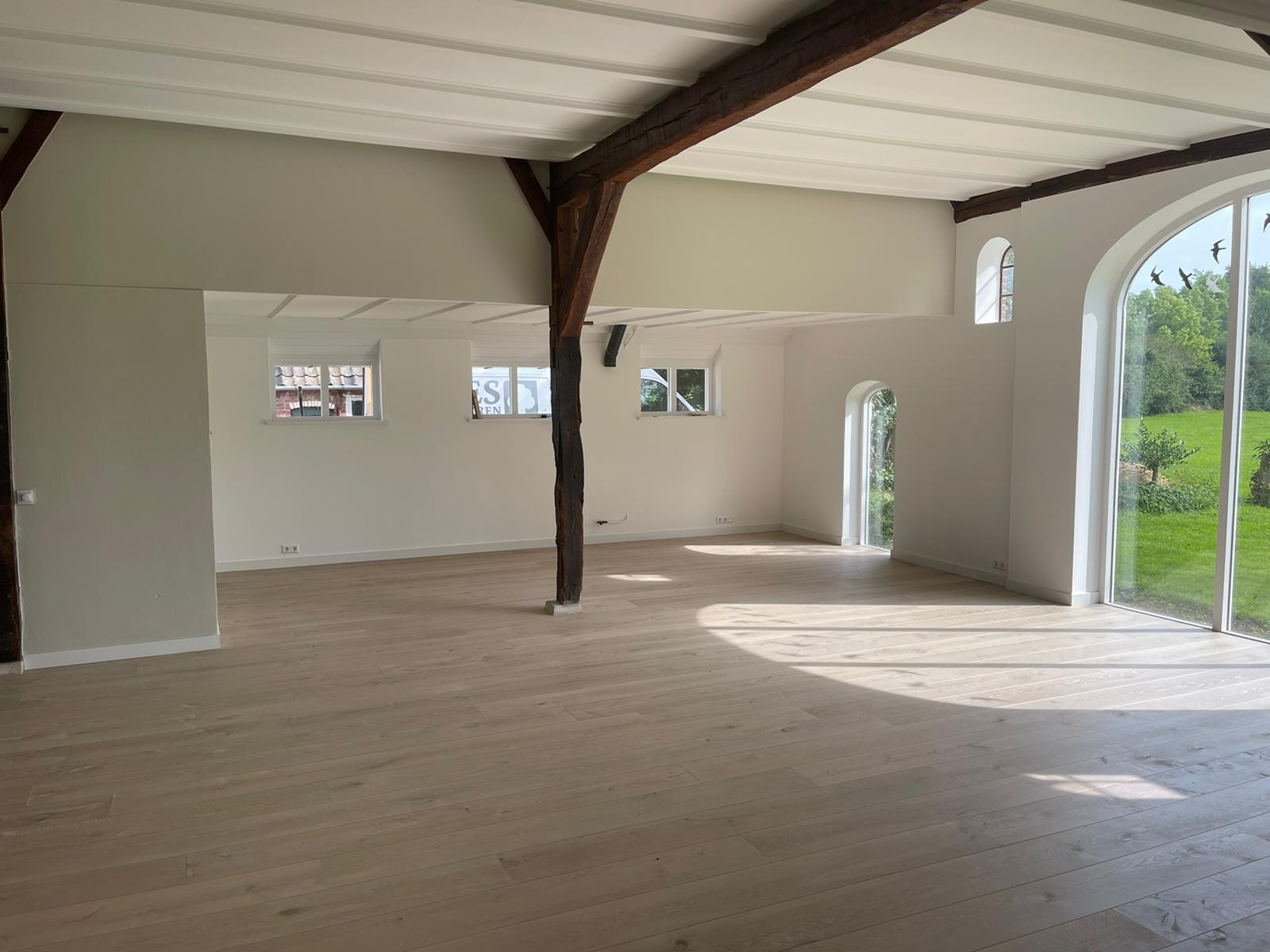
In summary:
- A sand/cement screed must dry for at least 1-1.5 weeks after pouring, per applied CM thickness of floor. (4 cm = 4 weeks drying)
- The sand/cement screed must meet a “D20” standard (Anhydrite “C30” standard)
- After drying the floor, the start-up protocol must be completed. (10-14 days)
- The inspection and moisture measurement can then be carried out.
- If approved, the floor can be installed.
- Follow the heating protocol after installation
- Check the relative humidity. For a longer period with a value lower than 40%, we recommend artificially humidifying the room and dehumidifying the air for higher than 60%.
Do you have questions? Contact us or visit the showroom for tailor-made advice.
Ontvang maatwerk advies in onze showrooms
Uipkes Wood Flooring can build on years of experience gained through installation and delivery
of many different wooden floors for different private individuals, architects and companies.
Our floors are literally and figuratively sustainable. They are made to be enjoyed carefree for decades and they are produced responsibly.
Wooden floors on underfloor heating have been a warm combination for years. We have more than 15 years of experience in this combination and we have been installing wooden floors with great care every week for years on underfloor heating or underfloor cooling. All our floor parts that are suitable for underfloor heating have passed a tough test. The measured Rc value of our layered floor part “ Vincent ” is 0.088 KW/m2, which is low. So the house simply gets warm; Even if there is a cold winter.
In addition to installing wooden floors on underfloor heating , we can also install and connect underfloor heating in existing homes, new-build homes, business premises or apartments. After installing the underfloor heating the start-up protocol must be carried out. Read below how you can do this.
Underfloor heating as additional heating or main heating
Start-up protocol and preparation
To prevent swelling and shrinkage (crack formation), a constant temperature is required
the workplace is important. Avoid major changes and take that fact into account
underfloor heating is a slow system. Before the wooden floor is laid, it must be checked
of the moisture percentage in the work floor is important: sand cement maximum 2.0% and
anhydrite maximum 0.3%. In addition, the finished floor must be at least 1 month old.
We will carry out these measurements during the preliminary inspection, which we do approximately 3 to 4 weeks in advance
come and carry out installation in the home. The start-up protocol must have already been executed.
NB! Before you can start the firing procedure, the sand cement must be added
screed is dry. If there is a new sand-cement screed
applied, keep for at least 1 to 1.5 weeks for each centimeter of thickness
drying time! Even if an accelerator has been applied!
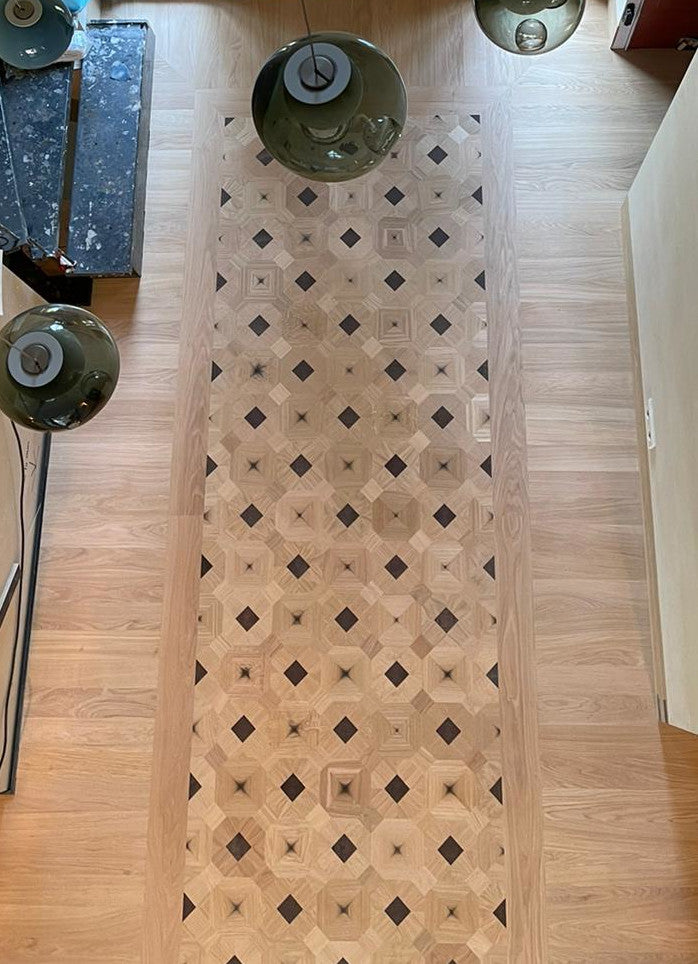
Start-up protocol and preparing the work floor
- On the first day, the work floor is heated with a water temperature that you set through the
pipes flow at 20 ºC. - The water temperature must then be increased by 5 ºC per 24 hours to the maximum of the system (for example 45 ºC).
- Keep the maximum temperature at least 24 hours per centimeter of work floor thickness, i.e. with a finishing floor of 3 cm thick, for 3 days.
- Then reduce the temperature in the same way, to the water temperature of 20 ºC.
Total warm-up and tear-down time: approximately 14 day

Start-up protocol during and after installing the wooden floor
- During installation, the work floor should be approximately 15-18 ºC (water temperature 20ºC). This maintain temperature for at least 5 days after completion of laying.
- Then, if desired, slowly increase the temperature, 2 ºC per day, to maximum water inlet temperature of 35 ºC.
- Also adjust the water temperature gradually at the beginning and end of the heating season increase and decrease,
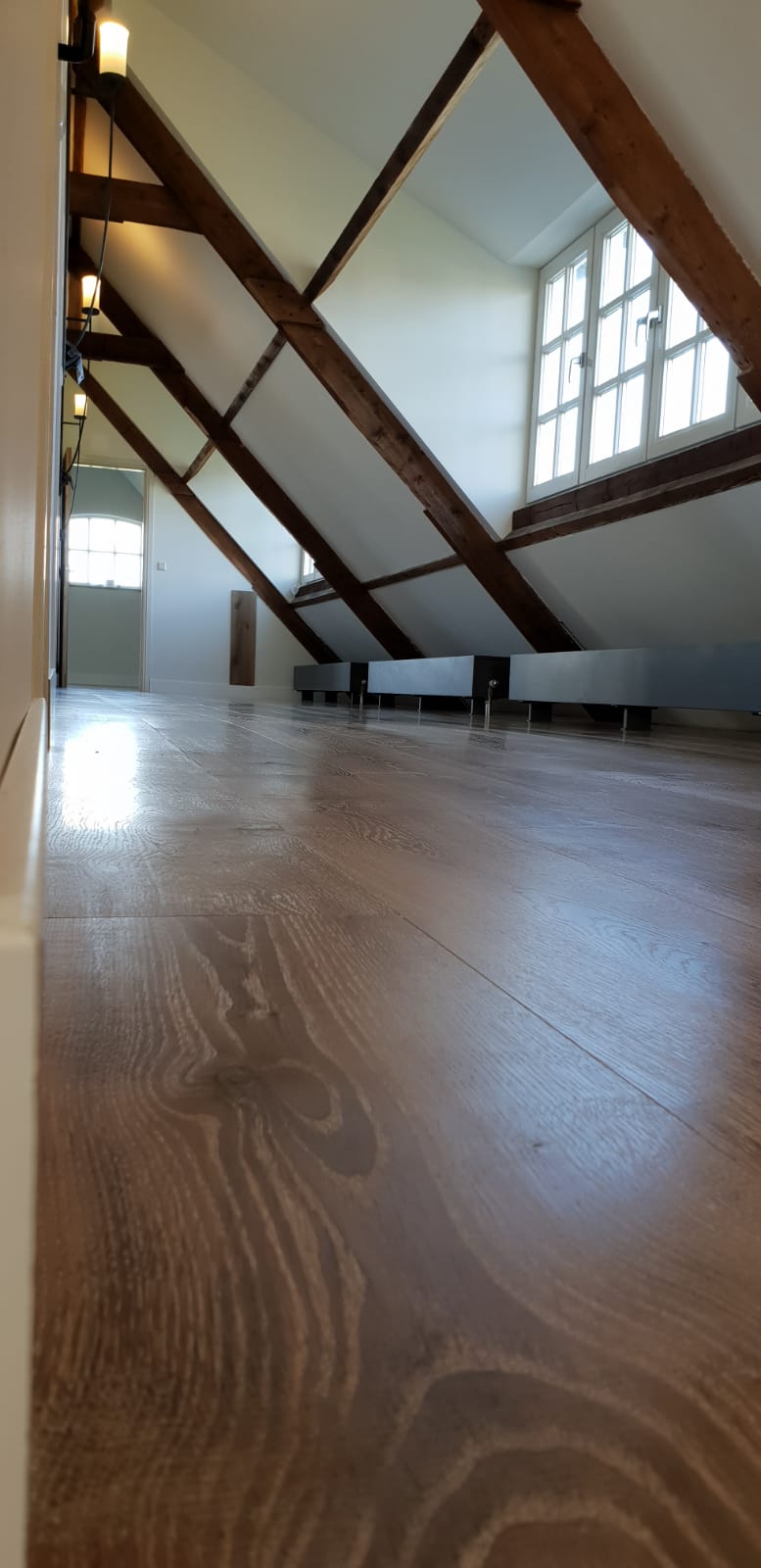
Relative humidity percentage
Despite the fact that our layered floorboards have a neutral shrinkage and expansion pattern, they remain
it is a wood product. For all wood products, the volume (read: width) is determined by the amount of moisture in the wood .
Especially in the winter period, when you make optimal use of the underfloor heating , - at the time of
frost - the relative humidity percentage is lower than 40% for days. Dry air combined
with a floor temperature above 25 ºC can cause the wood to shrink, causing
tension can arise in the various layers of the composite planks. This can result in the development of cracks in the floor part.
To prevent this tension, we advise you to check the relative humidity percentage. (You can do this with the digital hygrometer that you receive with the floor.) For values lower than 40%, it is advisable to humidify the room artificially. This can be done with a humidifier.
If the value is higher than 60% for a long time, you can dehumidify the air by ventilating and regularly opening windows and doors and using ventilation grilles in damp rooms. You can also use underfloor heating (in winter) to reduce humidity more quickly.
Ontdek de mogelijkheden in onze showrooms
Showrooms
-
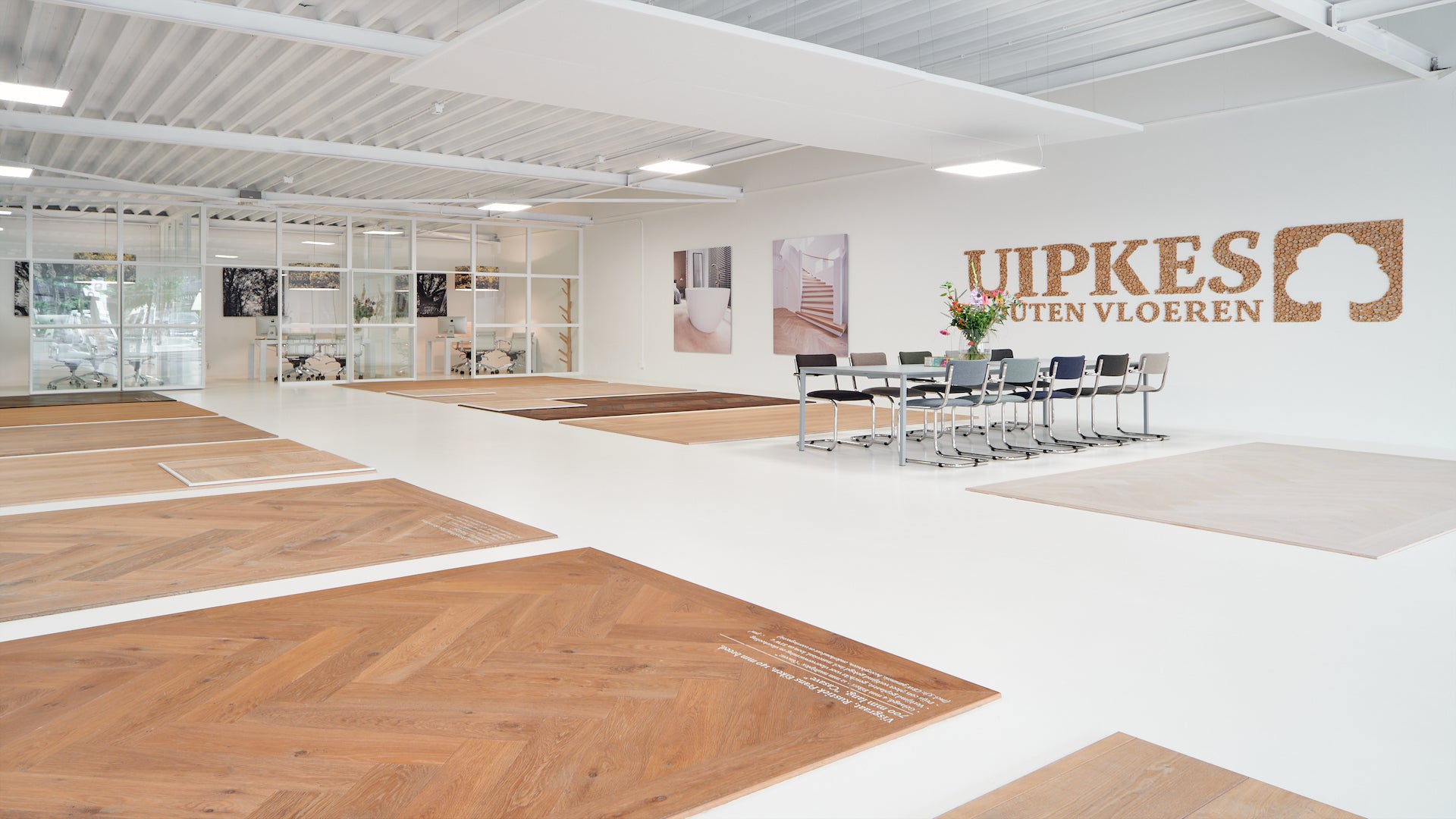
Alphen a/d Rijn
Euromarkt 113
-
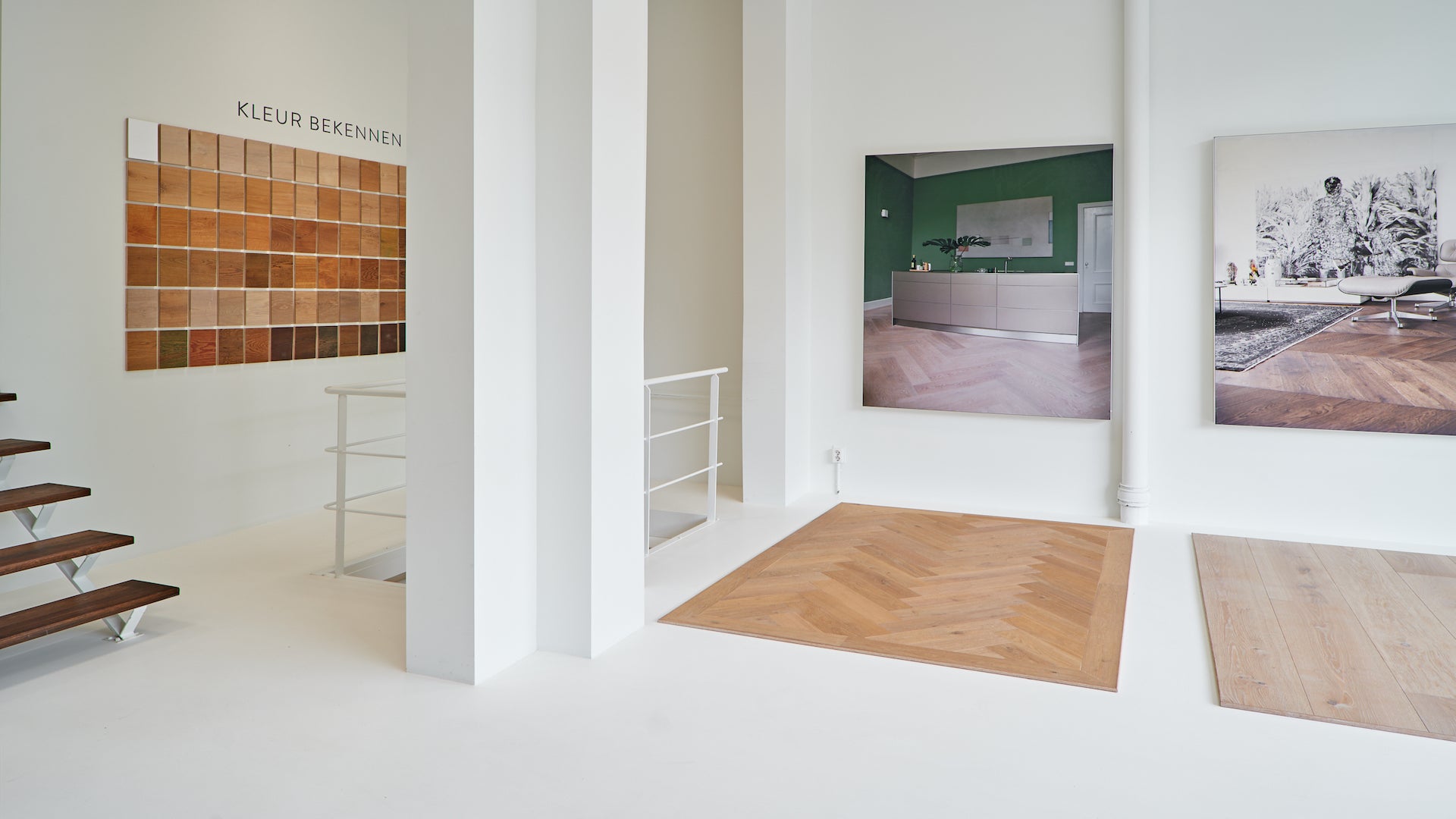
Amsterdam
Roelof Hartstraat 4
Veelgestelde vragen
What is a start-up protocol for underfloor heating ?
The underfloor heating start-up protocol is a procedure followed to gradually warm up the underfloor heating system before the wooden floor is installed. This protocol is essential to prevent damage to the subfloor or floor covering, like swelling, shrinkage and cracking. It involves gradually increasing the water temperature in the underfloor heating to a certain maximum, followed by a reduction phase.
How should underfloor heating be started the first time?
When the underfloor heating is first started, the water temperature is gradually increased over a period of approximately 14 days. This starts with a water temperature of 20 ºC on the first day, which is increased by 5 ºC every day to the maximum of the system. This maximum temperature is then maintained for at least 24 hours per centimeter of work floor thickness, before it is gradually reduced again.
What is the heating protocol after installing the wooden floor?
After installing the wooden floor, the startup protocol must be completed. The water temperature is first slowly built up to a maximum temperature of 35 ºC, by 1 to 2 ºC per day, after which this temperature is maintained. The desired temperature can then be set via the thermostat in the living room.
How long does the start-up protocol take in total?
The start-up protocol for underfloor heating takes almost 2 weeks in total. This includes both the warm-up phase before installing the wooden floor and the warm-up phase after placing it.

